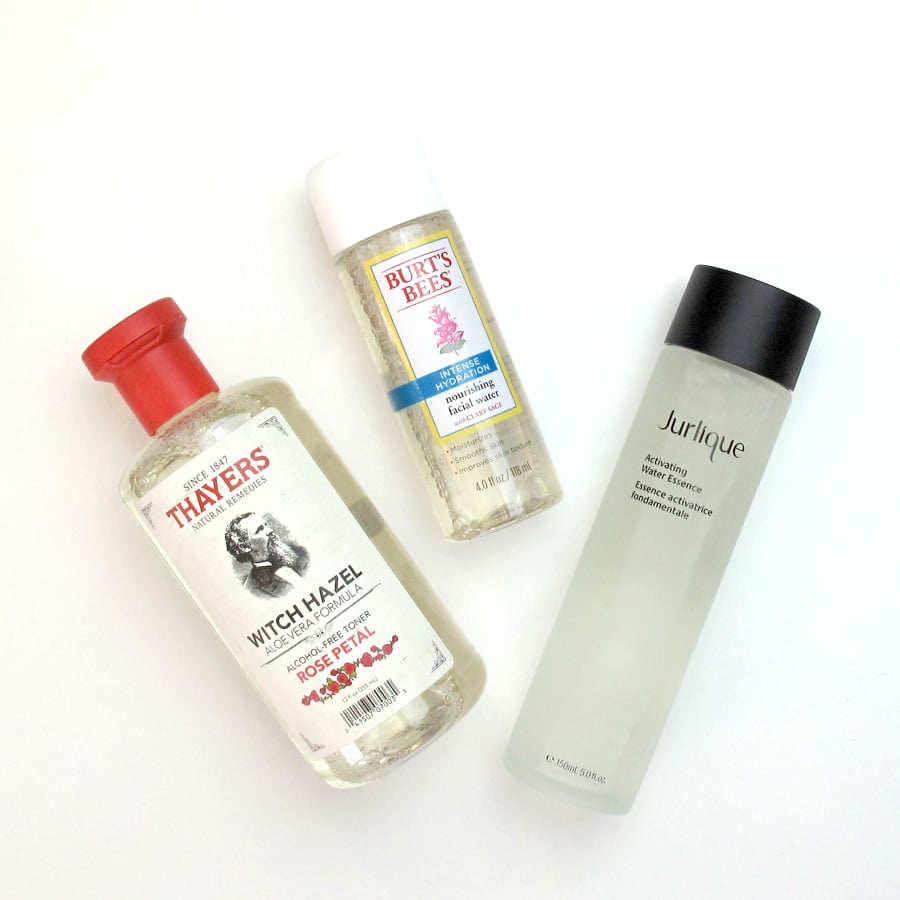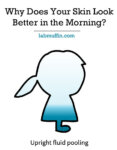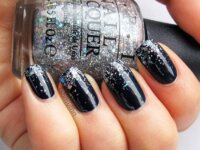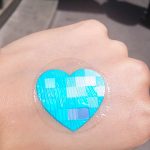Dehydrated skin is very common in winter, when cold dry air speeds up water evaporation from skin. It’s also made worse with air conditioning and recirculated aeroplane air. Exfoliants, moisturisers and masks help, but sometimes what your skin really needs is a targeted humectant product that will give a hardcore hydration boost.
What is dehydrated skin?
Dry skin occurs when you don’t have enough oil in your skin, while dehydrated skin occurs when your skin is lacking water. Dry and dehydrated skin are related issues, but they don’t necessarily appear together – your skin can be dry and hydrated, or it can be oily and dehydrated (like mine).
(This post has more on dry and dehydrated skin, how to tell the difference and how to treat them.)
What are humectants?
Humectants are one of the three classes of moisturiser ingredients (the other two are occlusives and emollients). Humectant ingredients are good at holding onto water, a bit like a sponge. Applying a humectant moisturiser essentially means you’ll have a bunch of teeny tiny wet sponges sitting on your skin, keeping it moist.
(The more technical version: Humectant ingredients tend to contain lots of oxygen (O) and hydroxy groups (OH), which can form strong hydrogen bonds with water. This means it’s harder for water to evaporate and escape once it’s on your humectant-covered skin.

Glycerin, a common humectant ingredient, also has the advantage of being able to travel and take water through small channels in the skin called aquaporins, so it can hydrate more deeply.)
What are the benefits of humectants?
Humectants, occlusives and emollients are found in moisturising creams and lotions, which are a must for your morning and evening routines if your skin is dehydrated. However, in dry weather, your skin might dehydrate between moisturiser applications, or your regular skincare routine might now be enough.
Here’s where humectant sprays come in! Unlike occlusives and emollients, humectants are water-based. Since makeup and sunscreen is oil-based, applying oils during the day will mess up your makeup and sunscreen. The beauty of a humectant mist is that they will hydrate your skin with as little disturbance as possible.
Humectant products
Unfortunately, water-based humectant products usually don’t come in spray form! They’re commonly designed mostly to be used after cleansing and before serum in a skincare routine, so they come in toner-like bottles with a small hole so you can apply them using a cotton pad or your fingers (they’re sometimes labelled as toners too). I transfer these into cheap spray bottles from the variety store, and watch out carefully for signs of rusting (you can also get spray bottles from eBay or Amazon). It also makes them a lot more portable for hydration when you’re out or in the office.
Humectant waters don’t have a common name, so to find them you’ll have to look at the ingredients lists! You’re looking for a product that is quite watery, with a humectant near the top of the ingredients list. Common humectant ingredients include glycerin and hyaluronic acid.
Here are three products that I’ve been using:

Burt’s Bees Intense Hydration Nourishing Facial Water
Burt’s Bees Intense Hydration Nourishing Facial Water is the first product I’ve seen that’s specifically designed to be a humectant water, which I reviewed a while ago. It’s mostly water and glycerin with some fruit extracts thrown in for antioxidant effects and to make it smell nice. It’s $12.99 for 118 mL (4 fl oz) in the US, and $24.95 in Australia.
Ingredients: Water, Glycerin, Actinidia Chinensis (Kiwi) Fruit Water, Propanediol, Salix Nigra (Willow) Bark Extract, Salvia Sclarea (Clary) Extract, Caesalpinia Spinosa Gum, Polyglyceryl-4 Caprate, Sodium PCA, Fragrance, Potassium Sorbate, Sodium Benzoate, Phenoxyethanol.
Jurlique Activating Water Essence
Jurlique Activating Water Essence is a humectant water from the very luxe natural Australian brand Jurlique. The humectants in it are a bit more exotic, with biosaccharide gum-1, saccharide isomerate and Althaea officinalis (marshmallow) root extract alongside glycerin to hydrate in multiple ways. This is my favourite product of the three, but it’s not cheap at $70 for 150 mL in Australia (not sure what the US price is). It spreads nicely so you don’t need much product, and it’s a bit more hydrating than the Burt’s Bees water.
Ingredients: Aqua (Water/Eau), Propanediol, Biosaccharide Gum-1, Saccharide Isomerate, Glycerin, Caprylyl/Capryl Glucoside, Prunus persica (Peach) Leaf Extract, Althaea officinalis Root Extract, Xanthan Gum, Polyglyceryl-5 Oleate, Sodium Cocoyl Glutamate, Glyceryl Caprylate, Hamamelis virginiana (Witch Hazel) Extract, Equisetum arvense Extract, Calendula officinalis Flower Extract, Rosmarinus officinalis (Rosemary) Leaf Extract, Lavandula angustifolia (Lavender) Flower Extract, Urtica dioica (Nettle) Extract, Melissa officinalis Leaf Extract, Achillea millefolium Extract, Origanum majorana Leaf Extract, Salvia officinalis (Sage) Leaf Extract, Mentha piperita (Peppermint) Leaf Extract, Melia azadirachta Extract, Fragrance/Parfum, Citric Acid, Phenoxyethanol, Potassium Sorbate, Ethylhexylglycerin, Limonene, Linalool, Citronellol, Geraniol, Citral, Farnesol.
Thayer’s Alcohol-Free Witch Hazel With Aloe Vera
Thayer’s Alcohol-Free Witch Hazel With Aloe Vera contains irritation-killing witch hazel as well as glycerin, which will moisturise and hydrate. The bottle I have smells of rose, but it also comes in unscented and lavender varieties. It’s very inexpensive, at $8 for 355 mL (12 fl oz) in the US, but it’s not easily found in Australia (iHerb has it for $11.50) and the hydration effect is noticeably less long-lasting than the first two products, possibly because glycerin is a bit further down the ingredients list.
Ingredients: Purified Water, Aloe Barbadensis Leaf Juice (Certified Organic Filet Of Aloe Vera), Glycerin (Vegetable), Fragrance (Natural Rose), Hamamelis Virginiana Extract (made from Certified Organic Witch Hazel), Rosa Centifolia (Rose) Flower Water, Citric Acid, Citrus Grandis (Grapefruit) Seed Extract.
For a super-budget version, you can also mix your own humectant-based spray using glycerin and water in a 1:10 ratio, but you’ll have to remake it frequently if you don’t add preservative.
There are also a whole bunch of budget-friendly toners from Asian skincare brands that look very hydrating, but I’m yet to try them.
What about alcohol-based humectant sprays?
There are a bunch of alcohol-based toner sprays available, which contain humectant ingredients. However, alcohol acts like the opposite of a humectant – it grabs onto water and speeds up its evaporation, so it can make dehydration worse! The humectants in the spray can counteract this, but it still means the humectants aren’t hydrating as well as they could be. For that reason, I don’t like using alcohol-based sprays in winter, even though I don’t think there’s enough evidence that alcohol damages the skin in any other way.
Why are the humectants so watered down?
You might be thinking that a pure humectant would work the best, to get the highest concentration of beneficial ingredients on your skin. However, if your humectant product doesn’t contain water, it’s like applying dry sponges to your skin. This causes water to come up through the lower layers of your skin to sit at the top. While this does make the surface layers moist, and theoretically your body is an almost-bottomless vat of water, it can cause very temporary dehydration in your skin later on, and you won’t get an instant boost of moisture. Additionally, pure humectant moisturisers tend to be unpleasantly sticky. So you want the product to be mostly water!
Do you use a separate humectant product? What’s your favourite?
Burt’s Bees and Jurlique products were provided for editorial consideration, which did not affect my opinion. This post also contains affiliate links – if you decide to click through and support Lab Muffin financially (at no extra cost to you), thank you! For more information, see Disclosure Policy.






Hi! Thanks for an interesting post! I’ve been thinking about getting a moisturizing spray recently.
And then I discovered I have a spray bottle of Mist & Fix (make-up setting spray) by Make Up For Ever sitting in my make-up drawer. I have only used it to set make-up directly after application so far. But your post got me thinking – can I also use it throughout the day? Even though it doesn’t have glycerin at the top of ingredient list:
Water, Methylpropanediol, Pentylene Glycol, AMP-Acrylates/Allyl Methacrylate Copolymer, Ethylhexylglycerin, Phenoxyethanol, Biosaccharide Gum-1, Parfum (Fragrance), Methylparaben, Hexyl Cinnamal, Limonene, Beznyl Salicylate, Butylphenyl Methylpropional, Linalool
What do you think? It has the advantage of already being in a spray bottle, so no decanting would be needed. Or is it not really moisturizing enough and really only forms a film to keep make-up in place?
It might work – does it feel hydrating? The first couple of ingredients after water seem to have humectant effects…
Hmm, for some reason I thought that the Jurlique might be more like SK-II’s Facial Treatment Essence with fermented ingredients. I personally love Hada Labo’s hyaluronic acid toners! Such a great additional layer of hydration 🙂
I need to buy some Hada Labo – I wanted to pick some up in KL on a stopover but everything was over 100 mL so I couldn’t take it on the plane -_- Maybe I’ll find some smaller products next time…
I’ve been eyeing off this trilogy product (https://www.trilogyproducts.com/au/products/hydrating-mist-toner) for ages thinking it would work like the products you have mentioned but it doesn’t look like it has many humectants – but I suck at looking at ingredients. It’s already in a spray bottle which is why I thought it would be good during the day time. I think I’ll check some of my cruelty free “setting sprays” as I know they have glycerin and water and really work better at taking away the powdery rather than setting.
It does look like it mostly uses lavender oil and water for hydrating rather than humectants – the glycosides may also do a bit but I don’t think it’ll be as effective as something glycerin-based.
Hi! I have oily-acne prone skin and i recently got the Thayers Alcohol Free Toner, Unscented Witch Hazel with Aloe Vera Formula.
The ingredients are:
Purified water, aloe barbadensis leaf juice (certified organic filet of aloe vera), glycerin (certified organic vegetable), hamamelis virginiana extract (made from certified organic witch hazel), citric acid, citrus grandis (grapefruit) seed extract
I tried it on my forehead and i broke out with 2 pimples? I don’t understand how or why?
Interesting post! 🙂 I love your blog. Recently found it and have been binge reading your posts. keep it up!
Great article! Just to let you know, the link to the Thayers product on Amazon doesn’t seem trustworthy. Their ingredients show “Methylparaben (a gentle and safe preservative), Polysobate 20 (and emulsifier derived from Coconut Oil), and an all-natural fragrance.”
The genuine product has : Purified Water, Aloe Barbadensis Leaf Juice (Certified Organic Filet Of Aloe Vera), Glycerin (Vegetable), Fragrance (Natural Rose), Hamamelis Virginiana Extract (made from Certified Organic Witch Hazel), Rosa Centifolia (Rose) Flower Water, Citric Acid, Citrus Grandis (Grapefruit) Seed Extract
Here is the company’s product page: https://www.thayers.com/shop-thayers/premium-witch-hazel/thayers-alcohol-free-rose-petal-witch-hazel-toner/
Are aloe vera spray mists also considered as humectants? My job requires me to be under the sun for long periods of time and my wife has instructed me to spray on an aloe mist she insists that I bring with me to work, every few hours. It has really helped in making me feel refreshed but otherwise, I’m not really sure what it does LOL Your post has made me understand it better though!
It has a little humectant ability, but not that much! Aloe vera is a bit overrated for sun damage treatment, but it does feel nice and have a cooling effect.
Great article. Thanks!
Regarding THAYER’S ‘ALCOHOL-FREE WITCH HAZEL WITH ALOE VERA’, is it also good as a toner to lower ph after using surfactants ?
But is it useful to spray over your make up or sunscreen? In another article you explained why water on top of oil doesn’t get absorbed, or barely.
Also, I read that humectants without an occlusive actually can draw water from your skin and evaporate together. What’s your opinion on that?
The oil will be absorbed or move around during the day, so if your skin is drying out and the oil isn’t a complete layer it can definitely help!
It’ll evaporate, but the water is coming from deep in your skin/body, where we’re about 70% water, so it shouldn’t make a big difference 🙂
Haha, I meant more like: doesn’t it dry out the skin instead of hydrate it if there’s no occlusive? I’m not too worried about systemic dehydration :p.
The skin will be quickly rehydrated from water inside your body – the deeper layers aren’t in danger of drying out 🙂
Ok, good. 🙂 And what about dehydration because of evaporation? For example in a dry environment?
Sorry, I’m a bit confused by your question? Are you asking if a humectant will ever cause more dehydration?
Yes that’s what I read somewhere
I think it’s incredibly unlikely. Firstly, evaporation from the top layers will be slowed down by the presence of the humectants, since they’re non-volatile, compared to skin with no humectants. Secondly, of water evaporates from the top layers, water will rise from the lower layers to replace that, then water from deeper inside the body will in turn replace that, so until your body dries up you’ll have a high water gradient in place that will keep replenishing your skin.
Yay! Thanks for clearing that up!
I just ordered Glycerin off Amazon and i was going to make my own maybe throwing a drop of essential oil in there. Is the essential oil a good idea, and how long would the humectant spray last without preservatives.
If the essential oil works well on your skin it wouldn’t hurt – it could potentially help the humectant spray last a little longer! Without preservatives I think it’ll last around a week or two, with the essential oil it might be closer to 2 weeks, but keep an eye on it!
Would it help to make a humectant spray or toner with rose water, glycerin & hyaluronic acid all mixed in together?
That could work, as long as you have a preservative! 😉
I have very dehydrated/oily skin but when I use humectants they make my face really red and hot feeling. I always make sure to apply humectants to damp skin and seal in with squalane oil. Is there a reason my skin reacts this way to humectants? I’ve even tried making my own solutions of glycerin and water or sodium pca and water to see if my skin was reacting to other ingredients in products, but I have the same reaction no matter what.
If your skin is very sensitive then it could be increasing permeability. Have you gotten checked for rosacea?
I definitely have a milder form of rosacea but when I was younger my dermatologist refused to give me the diagnosis. I struggle with flushing and have a red tint to my skin at all times. Ive tried eliminating humectants in favor of applying squalane to moist skin, and Ive tried oil cleansing to avoid water and it seems that oils just dehydrate me even more and cause breakouts. Do you think I can build a tolerance to humectants? Thanks for your reply and I appreciate all your articles so much!
I use Olay Mist and I love it. After beginning treatment with tretinoin, my face has become so dry and flaky. This mist offers instant relief and moisture even over makeup! It even smooths over my wrinkles. It scores well on cosdna.com and is very affordable at under $13.00.
It sounds fantastic, thanks for the rec! I’ve recommended it to my friend who is about to start on isotretinoin 🙂
Hello
Ever since I’ve started using Tretinoin my skin is sensitive to every single cream. I’ve been to the Doctors and they say I have mild Rosacea.
I’ve been watching Dr Dray Videos online and this thing about putting a humectant on wet skin and then immediately put on occlusive moisturiser on a wet face along with a humectant has ruined my skin barrier. Can you please tell me the correct way on using a humectant on a wet face and then a occlusive because sometimes I do it right and sometimes I don’t for example sometimes the humectant will dry then I will put on my occlusive cream and that feels ok? Sometimes not.
I’m doing something wrong with this putting cream on damp skin to prevent moisture loss and my skin is so sore and I’m in so much pain and depressed because of the pain. Can you please help. I would be so thankful and grateful for your help.
Hi Michelle,
I’m a compounding pharmacist in the states and am wanting to put together a sort of daily toner for my patients. We make several products that we sell to the doctors, and they then turn around and sell them for an absurd amount, which I am trying to change with our own over the counter formula.
My goal is to have glycolic acid (4-7%), aloe, Vitamin C (1-2%), and in-house made distilled rose water. I was trying to keep this as low ingredient as possible, but you have me sold on glycerin and its hydrating properties. I hoped to avoid any and all preservatives, keep this as hippy-dippy and low ingredient as possible, but preservatives seem like a must. Do you have any recommendations on natural preservatives? Or any critiques on the above formula? Thanks.